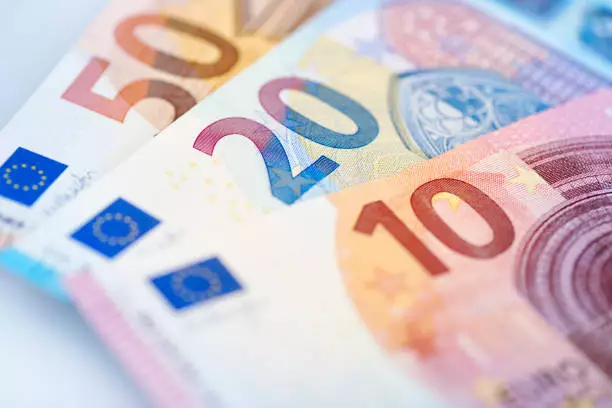The recent surge of the EUR/USD currency pair to 1.1801 exemplifies a pivotal shift in global financial sentiment. This rally isn’t a mere coincidence but a reflection of profound expectations that the Federal Reserve will adopt a more accommodating monetary policy stance. The Fed’s cautious tone, coupled with hints of potential rate cuts, has significantly diminished the allure of the US dollar. Such a dovish outlook serves as a catalyst, increasing traders’ confidence in the euro’s potential for further appreciation.
Federal Reserve Chair Jerome Powell’s recent statements emphasize a data-dependent approach, leaving the door open for a rate cut but refraining from definitive action. His comments highlight that inflationary pressures, exacerbated by tariffs, have been a formidable obstacle for rate reductions so far. Yet, the fact that the Fed remains ready to pivot underscores the fragile confidence in the US economy’s resilience. As the market closely monitors upcoming economic indicators, the expectation of a more accommodative Fed has fostered a sentiment shift toward risk-on assets, enabling the euro to push higher against the dollar.
Adding further complexity is the current US fiscal landscape. The Senate’s approval of a hefty tax and budget package—estimated to inflate the national debt by over 3 trillion USD—raises significant red flags. Such fiscal expansion raises doubts about the US’s long-term fiscal sustainability, undermining confidence in the dollar’s strength. Investors, now more wary of mounting debt and deficits, have begun pricing in a cautious view of US economic stability, providing additional upward pressure on the euro.
The Market’s Next Moves: Crucial Data in the Crosshairs
As traders and investors await the next wave of pivotal data, the upcoming employment figures could serve as a decisive factor for the dollar’s trajectory. The ADP report on private employment and the June labor market statistics are more than just numbers—they are signals of the economic health and resilience of the US economy. Better-than-expected figures could complicate the overall narrative, potentially pressuring the dollar higher and tempering the euro’s surge. Conversely, weaker data could reinforce doubts about the Fed’s dovish stance and keep the euro buoyant.
In this environment, market participants must remain vigilant. The financial landscape is fraught with conflicting signals: a dovish Fed asserting patience and data-dependent decision-making versus fiscal headwinds and ballooning debt concerns. The outcome hinges on how the economic data aligns with these geopolitical and financial developments, thus dictating the magnitude and sustainability of the current rally.
Technical Patterns Paint a Nuanced Picture of Potential Volatility
From a technical standpoint, the EUR/USD’s recent price action signals both momentum and caution. On the four-hour chart, the pair has completed a wave towards 1.1777, establishing a consolidation zone. An upward move toward approximately 1.1848 appears imminent, but this could be followed by a correction back to 1.1750. The possibility exists for a breakout beyond these bounds—either retaking the rally toward 1.1885 or reversing toward 1.1430 if bearish momentum intensifies.
Indicators provide a layered narrative: the MACD’s positive positioning hints at sustained buying interest, yet its nearing of the zero line suggests that a correction could be imminent. Meanwhile, on the shorter-term hourly chart, oscillators like the Stochastic are already signaling overbought conditions, with a downward trajectory toward 20. This indicates mounting bearish pressure, hinting that the rally may encounter resistance and reverse before reaching new highs.
Such technical signals underscore a market at a crossroads, where the balance of fundamental optimism and technical exhaustion could precipitate a shift in trend momentum. Traders should be prepared for heightened volatility, as these conflicting signals often lead to swift reversals.
Perspectives: The Euro’s Challenge to the Dollar’s Dominance
Ultimately, the current price action reflects a broader narrative: the euro is challenging the US dollar’s dominance amid deteriorating fiscal confidence and a dovish Federal Reserve outlook. The currency pair’s ascent to 1.1801 is not merely a short-term correction but a reflection of shifting investor dynamics that favor risk-sensitive assets. If upcoming economic data supports the gloomy outlook on US growth and inflation, the euro may breach resistance levels convincingly, forging a more sustained rally.
However, the story is far from settled. The dollar’s future strength will pivot on key economic releases and how the markets interpret the Fed’s next moves. The balance of evidence suggests that the euro’s current momentum could be fleeting if new data shows resilience in US economic fundamentals. Still, the undercurrent of fiscal uncertainty and global risk appetite favors a more prolonged euro rally, provided the pair can navigate technical resistances.
In a landscape increasingly driven by policy expectations and macroeconomic signals, the EUR/USD’s current trajectory exemplifies the power of overarching sentiment. It’s a testament to how expectations—whether dovish Fed policies or fiscal fears—can shape the currency markets in the quest for gains and stability.

